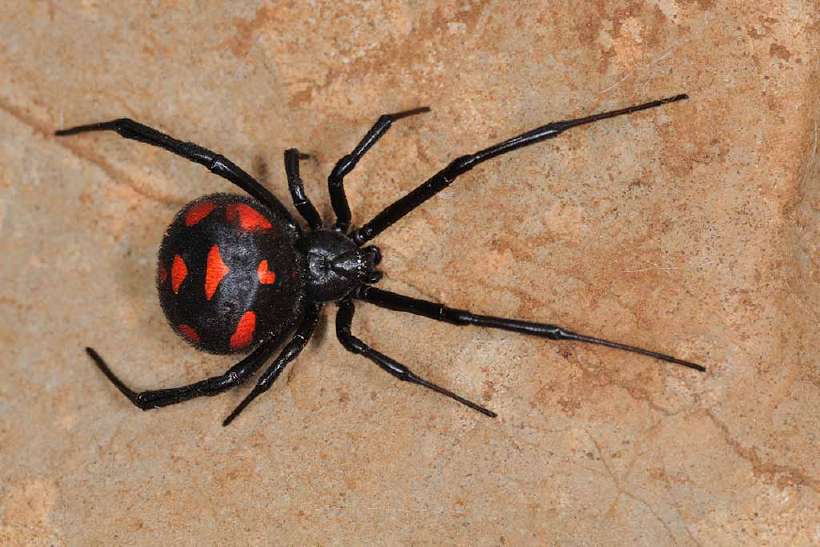Does the Black Widow Spider Kill her Mate?
Home / Science for Kids / Living World for Kids / Does the Black Widow Spider Kill her Mate?
Largest of the cobweb weavers, the black widow or Latrodectus Mactans is a poisonous spider. They get their ignoble name because the females commonly eat their mates after mating (as is common among spiders) and hence are often widows. They comprise about six species and inhabit warmer regions of the world.
Shiny black in colour with a reddish hourglass shape on the underside of her spherical abdomen, the female black widow is about one inch long. The male is about half her size and may have a pair of reddish stripes on the side of his abdomen.
They are commonly found on the underside of ledges, rocks, plants and debris, wherever a web can be strung.
The webs that the black widows spin lack shape and form. Though the webs are erratic in appearance, the silk is stronger than almost all other arachnids.
The diet of the black widow consists of insects, spiders and centipedes. After ensnaring the prey in the web, the black widow makes small punctures in the victim’s body and sucks out the liquid contents.

The adult male black widows are harmless with smaller bodies and longer legs. They are often found wandering in search of females and do not bite or prey on other spiders. They are very rarely seen because the female usually eats them after mating.
The female lays several eggs in batches, each containing upto 750 eggs each in one summer. The egg case about half an inch in diameter is suspended in the web. It is pear shaped, white to tan in colour and has a paper-like texture. The young black widows are coloured orange and white when they emerge one to four weeks later. The female black widows may live for more than a year-and-a-half.
The black widows prefer to nest near the ground, in the dark undisturbed areas. Nest sites are often near holes produced by small animals or around construction openings and wood piles. The females are shy and nocturnal in habit. They rarely leave their web but will bite if threatened. They are also prone to bite when guarding an egg sac. The bite itself is often not painful and may go unnoticed. But the poison from a widow bite can cause abdominal pain producing cramping and nausea. The black widows inject a toxin that affects the nervous system. Muscle and chest pain or tightness are some of the most common reactions to the widow toxin.
Other general symptoms include restlessness, anxiety, breathing and speech difficulty.Only the bite of female, usually the adult female is potentially dangerous. Although extremely painful and temporarily debilitating, fatalities from untreated widow bites are uncommon. Death usually results from respiratory paralysis.
464 words |
4 minutes
Readability:
Grade 7 (12-13 year old children)
Based on Flesch–Kincaid readability scores
Filed under: living world
Tags: #spiders, #mating
You may also be interested in these:
The Deadly King Cobra
So Many Monkeys!
AHA! Books: Manjula Padmanabhan